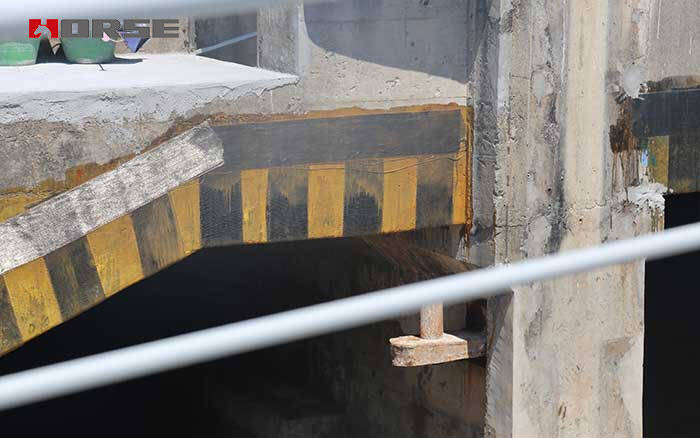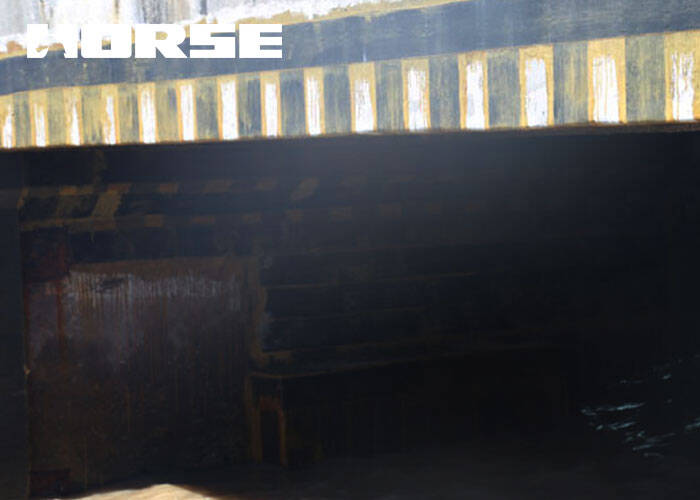Concrete Wharf Reinforcement
Carbon Fiber Reinforcement
The method of carbon fiber reinforced wharf has the advantages of simple construction process, low cost, short construction period, and obvious reinforcement effect.

Concrete Wharf Reinforcement
The continuous structural damage and material degradation of the port wharf structure in the daily frequent operation process leads to the reduction of function, which leads to the failure of the terminal's operational capacity to be guaranteed, and there is a danger of insufficient safety and durability.
At present, in the construction of wharf maintenance and reinforcement, in addition to grouting the cracks, the main reinforcement method is to paste carbon fiber composite materials. Carbon fiber cloth and supporting dipping glue are used together to form a carbon fiber composite material. Carbon fiber cloth has high tensile properties, can improve the bearing capacity and strength of concrete structures, and can also avoid the further development of concrete cracks.
Through the exploration of the construction process of pasting carbon fiber cloth composite material and the analysis of the reinforcement effect, it can be understood that this type of reinforcement construction is widely used in the current stage of structural reinforcement construction, and the effect is obvious.
Analysis of reinforcement effect
Taking a wharf beam and slab concrete sticking carbon fiber reinforcement construction as an example, the reinforcement effect was explored. The selected materials for this project were sent for inspection by witness and sampling, and the test results were all qualified. The construction part is executed in strict accordance with the established construction plan, and the key procedures such as the preparation, brushing and pasting and maintenance of the adhesive are strictly controlled.

Reinforcement effect detection
In order to confirm the reinforcement effect, after the bond strength is reached, the carbon fiber positive tensile bond strength test is carried out. The detection steps are as follows:
1) Surface treatment: Randomly select the detection position, and polish the surface of the detected position to ensure that the surface is dry and smooth.
2) Cutting and pre-cutting: Make a circular cut from the carbon fiber cloth reinforced surface to the inside of the concrete, with a cutting depth of 5-10mm and a width of about 2mm. The shape of the pre-cut seam is a circle with a diameter of 50mm.
3) Paste steel standard block: Use high-strength, fast-curing adhesive to paste the steel standard block. The positive tensile bonding strength of the adhesive should be greater than the positive tensile bonding strength of the structural adhesive pasted to the carbon fiber sheet. The steel standard block should be fixed immediately after pasting.
4) Load at a uniform speed of 1500~2000N/min, record the peak value of the positive tensile bond strength, that is, the load value when the bonding surface of the carbon fiber cloth and the concrete is damaged, and observe the failure mode. Through the test, 5 groups were randomly selected on site. The strength of each sample in each group ranges from 2.51 to 3.12 MPa, and each sample is concrete cohesive failure, which meets the requirements of the standard CECS146:2007 Article B4.4. .
Reinforcement effect analysis and suggestions
In the carbon fiber cloth reinforcement construction of a wharf, the bonding capacity of carbon fiber cloth and concrete meets the design requirements, and the sample samples are all concrete cohesive failure. However, if it is the reinforcement and reconstruction of the old wharf, the concrete performance will decrease significantly. If the carbon fiber positive tensile bond strength test is carried out, the concrete cohesive failure will occur, but the bonding force is low. Therefore, the actual reinforcement effect should be tested during the inspection process. According to the actual situation of the building, other testing methods are used for verification when necessary.
According to the requirements of the carbon fiber cloth pasting position and the number of layers in the design documents, the bending and shear resistance of the wharf are calculated. After calculation, the bending and shear resistance of the beams and slabs of the wharf reinforced with carbon fiber cloth can meet the requirements of the bearing capacity of the wharf and improve This improves the safety and stability of the overall operation of the terminal.
Carbon fiber material itself has the characteristics of high strength, high elastic modulus, light weight and good corrosion resistance. When the carbon fiber cloth is pasted, the impregnating glue coated on the surface is modified epoxy resin glue, which has good corrosion resistance and anti-aging properties. After curing, the adhesive layer is wrapped on the surface and inside of the carbon fiber cloth, forming a whole with the concrete structure to bear the force. Therefore, the immersion of the carbon fiber cloth and the matching modified epoxy adhesive by seawater will not affect its durability. In order to improve the anti-erosion and anti-abrasion performance of carbon fiber cloth in the rising and falling of sea water, we can consider applying anti-corrosion coating on the surface of the entire reinforcement area. Taking further protective measures can strengthen the protection of the wharf and enhance its durability.
Concluding remarks
The application of carbon fiber reinforcement has been very extensive. The conventional application is mainly in the concrete structure. The reinforcement method has the advantages of simple construction process, low cost, short construction period, and obvious reinforcement effect. Under the premise of optimizing the construction process and strengthening the construction quality of key processes, the effect of concrete reinforcement can be ensured, and the performance of the concrete structure can be effectively improved, thereby improving the safety and durability of the wharf.